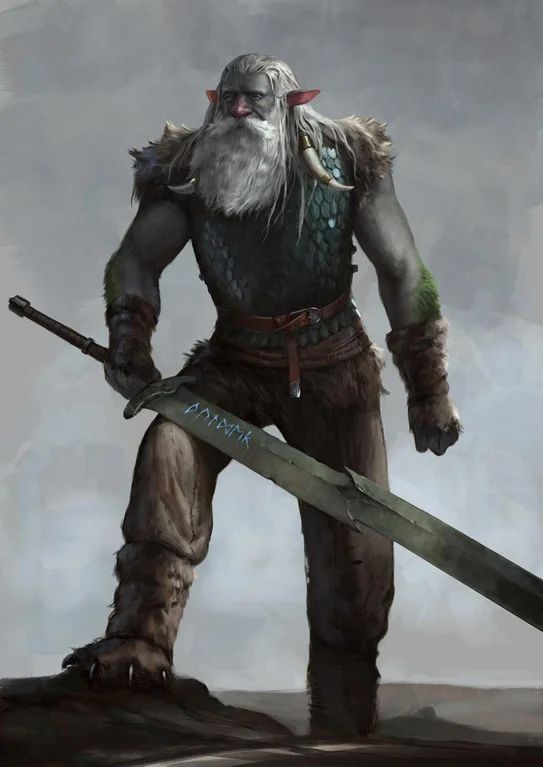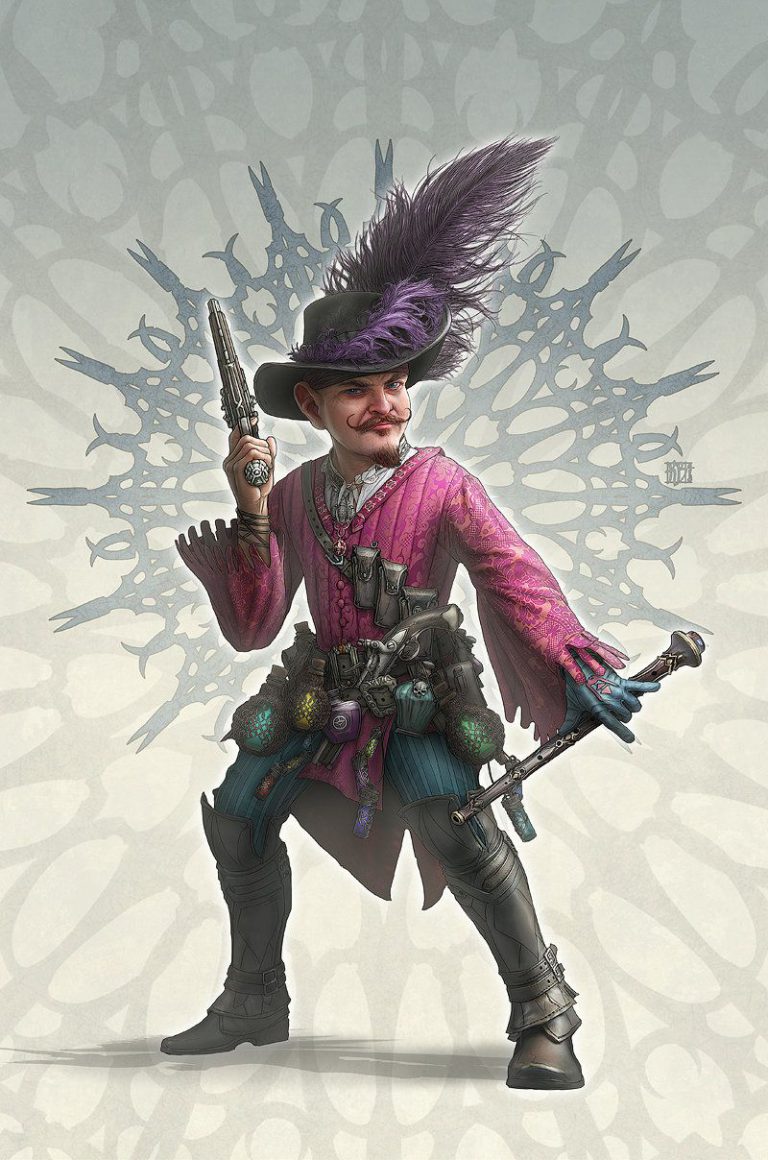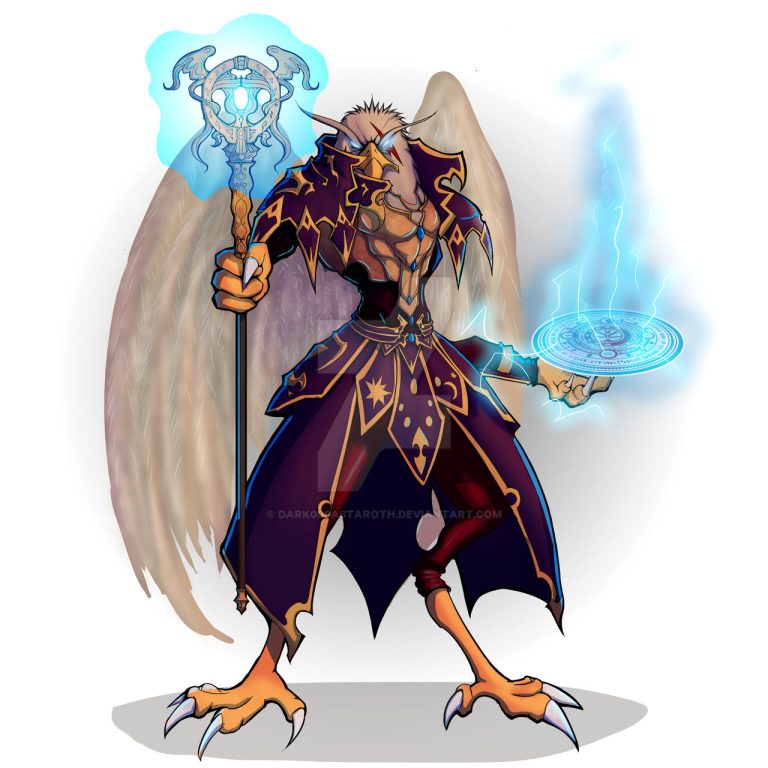D&D 5e: Firbolg Paladin Guide

D&D 5e: Firbolg Paladin Guide
Hailing from secret groves and mountaintop retreats, Firbolg tend to be reserved and contemplative. But they’re also eight feet tall and incredibly strong, so when the Firbolg strap on armor and go to war, backed by absolute faith in their cause, they make for a terrifying sight.
This short guide breaks down how to make a Firbolg Paladin, touching on the natural synergies between class and race, and what you might want to consider as you build yours. Let’s jump in.
How to Make a Firbolg Paladin
The first thing you’ll notice when building a Paladin is how stat hungry they are. The class needs Strength for its melee duties, but also wants a relatively high Charisma, because all of the class’s spells and special abilities key off that stat. On top of this, as a frontline brawler, the Paladin really wants as high a Constitution as it can, to increase its HP and the chance of making important saves.
That’s a lot to consider, and it means that you’ve got to choose your build early and specialize in it. Strength is the usual stat to max as you’re going to spend most of your combat time stabbing things, so start with this as high as possible. Your CHA and CON can happily sit as low as 14 and still both be perfectly viable until the late game.
The Paladin is proficient with all weapons and armor, backed up by ⅓ spellcasting and a host of innate class abilities. But at its heart, the class is absolutely designed for melee, with a built-in damage steroid and defensive auras for the allies that surround them.
This leads to two standard builds. One-handed weapon and shield for higher AC, or two-handed weapon or polearm for maximum damage. Both are good, and equally supported by class abilities, so choose whichever sounds more fun for you.
The Firbolg brings several unique things to the Paladin chassis, all of which are useful. The most minor is the ability to carry more weight, which seems like a random bonus, but is invaluable when you need it and great if you want to grapple your enemies.
Firbolg have innate magical abilities, including daily casts of Detect Magic and Disguise Self, neither of which the Paladin normally has access to, and which can also be recast with your spell slots. They can also turn invisible multiple times per day as a bonus action, and while you’re not the best at stealth, clanking around in plate and all, turning invisible to force Disadvantage in combat is a hilarious trick to have up your sleeve.
Finally, the Firbolg can speak to animals, plants, and vegetation, with Advantage on all checks. For a class that’s naturally going to be pushing their Charisma up, and probably has Diplomacy proficiency too, that’s a huge bonus to have when it comes to choosing who, or what, to talk to next.
How to Play a Firbolg Paladin
In terms of 5e classes, the Paladin is probably the most complete all-rounder. It’s as tough as any other front-line melee build, hits hard (incredibly hard when using its class abilities,) has utility spells, built-in healing that requires no other resource, and it’s really good at several skills, too!
So what are the downsides? There are two big ones. The first is complexity. The Paladin is a relatively complex class to play, with a lot of options, which all might be tough for someone new to the game to keep track of.
The second is resource allocation. Almost everything special about the Paladin requires a consumable resource, and most of these only come back on long rests. Overusing abilities early in the day can leave the Paladin bereft of their divine powers and stuck hitting things with pointy objects for the rest of the adventuring day.
However, there’s also no class that spikes as hard as a Paladin or feels as satisfying to have a lucky turn with. The core ability of the class, Smite, is a massive burst of damage that multiplies on crits and can be spent on every single attack you roll if you’ve got spell slots to fuel it, leading to maybe the highest single-turn damage in the game.
In terms of subclasses, the first one that might stick out is the Oath of Ancients, because of its ties to natural life and ancient places. But personally, I’d recommend against this because this Oath is mechanically a little underpowered and overall disappointing.
Instead, Oath of Conquest is mechanically powerful, with multiple effects that trigger off of fear that could easily be flavored into some sort of fey magic.
The Oath of the Crown is a strong defender, capable of healing the party and locking down large, single enemies.
Finally, the Oath of Redemption is for a Paladin that doesn’t turn to violence as a first option, with bonuses to Charisma checks and several effective ways to mitigate damage to the party when fighting is inevitable.
Outside of combat, the Paladin is happy as a Face, taking the lead in social situations. It’s also very good at keeping the party operating, topping up HP using Lay On Hands and spells. Both of these require no further investment, but if you want to specialize in either, there’s easy support available through Feats and multiclassing.
How to Roleplay as a Firbolg Paladin
A lot of the RP potential of a Paladin is tied up in their Oath, which defines the tenets that the character has sworn themselves to and the ideals they want to uphold.
This means there’s a lot of interesting play where your chosen Oath and the racial traits of the Firbolg: keeping secret, staying away from outsiders, guarding nature, intersect.
One of the biggest questions to answer is why? Why did your Firbolg choose to become a Paladin? Why have they sworn themselves to these ideals, and perhaps to a god? Why are they out adventuring, instead of with their own people?
The thing many Paladins have in common is protection and heroism. The class is the archetypal knight in shining armor, the shield of the common folk, and the sword against the darkness. That by itself is a ready call to adventure. Perhaps your character witnessed a tragedy, or suffered one of their own, and could see it happen no longer. Or perhaps they are part of a small number of Firbolg trained to stand against evil, wherever it emerges.
It’s also fun to remember that your Firbolg can innately speak to animals and plants. While this is obviously mechanically useful (as long as your GM plays long) it’s also a great RP tool. The party might not understand at first why you keep whispering to the bushes as you walk through the forest, and the image of the party dealing with a merchant while the enormous Paladin in the corner sweet-talks their pet cat for secret information is simply hilarious.
Whatever you choose, there’s a ready wealth of character choices for both the Firbolg race and Paladin class, and it’s sure to be fun to RP.









